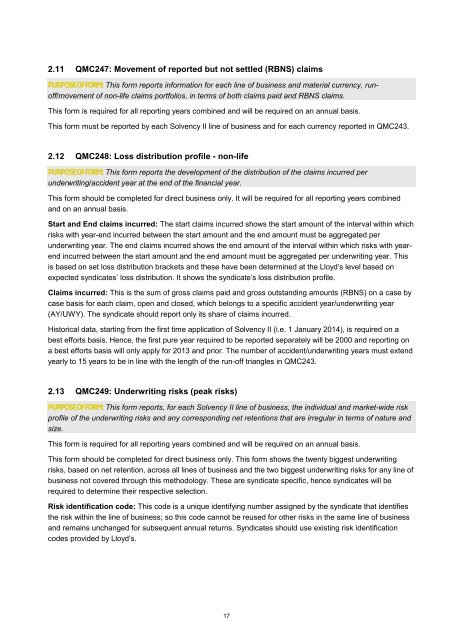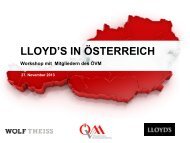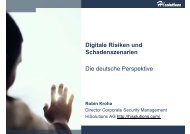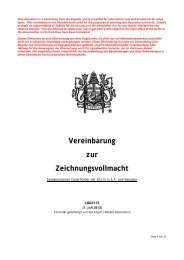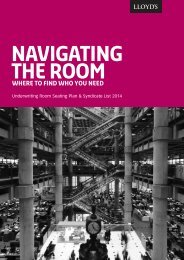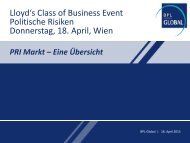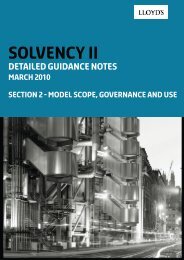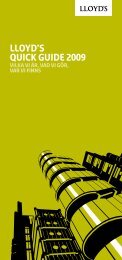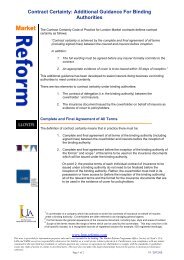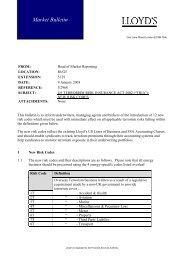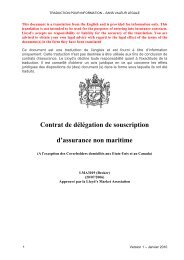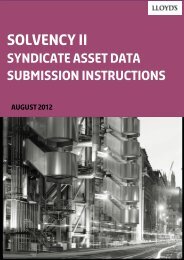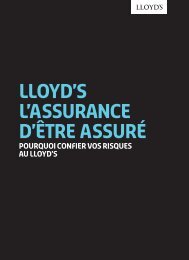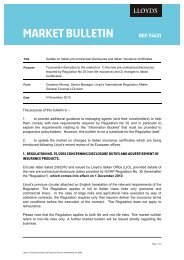You also want an ePaper? Increase the reach of your titles
YUMPU automatically turns print PDFs into web optimized ePapers that Google loves.
2.11 QMC247: Movement of reported but not settled (RBNS) claims<br />
Purpose of form: This form reports information for each line of business and material currency, runoff/movement<br />
of non-life claims portfolios, in terms of both claims paid and RBNS claims.<br />
This form is required for all reporting years combined and will be required on an annual basis.<br />
This form must be reported by each <strong>Solvency</strong> <strong>II</strong> line of business and for each currency reported in QMC243.<br />
2.12 QMC248: Loss distribution profile - non-life<br />
Purpose of form: This form reports the development of the distribution of the claims incurred per<br />
underwriting/accident year at the end of the financial year.<br />
This form should be completed for direct business only. It will be required for all reporting years combined<br />
and on an annual basis.<br />
Start and End claims incurred: The start claims incurred shows the start amount of the interval within which<br />
risks with year-end incurred between the start amount and the end amount must be aggregated per<br />
underwriting year. The end claims incurred shows the end amount of the interval within which risks with yearend<br />
incurred between the start amount and the end amount must be aggregated per underwriting year. This<br />
is based on set loss distribution brackets and these have been determined at the Lloyd’s level based on<br />
expected syndicates’ loss distribution. It shows the syndicate’s loss distribution profile.<br />
Claims incurred: This is the sum of gross claims paid and gross outstanding amounts (RBNS) on a case by<br />
case basis for each claim, open and closed, which belongs to a specific accident year/underwriting year<br />
(AY/UWY). The syndicate should report only its share of claims incurred.<br />
Historical data, starting from the first time application of <strong>Solvency</strong> <strong>II</strong> (i.e. 1 January 2014), is required on a<br />
best efforts basis. Hence, the first pure year required to be reported separately will be 2000 and reporting on<br />
a best efforts basis will only apply for 2013 and prior. The number of accident/underwriting years must extend<br />
yearly to 15 years to be in line with the length of the run-off triangles in QMC243.<br />
2.13 QMC249: Underwriting risks (peak risks)<br />
Purpose of form: This form reports, for each <strong>Solvency</strong> <strong>II</strong> line of business, the individual and market-wide risk<br />
profile of the underwriting risks and any corresponding net retentions that are irregular in terms of nature and<br />
size.<br />
This form is required for all reporting years combined and will be required on an annual basis.<br />
This form should be completed for direct business only. This form shows the twenty biggest underwriting<br />
risks, based on net retention, across all lines of business and the two biggest underwriting risks for any line of<br />
business not covered through this methodology. These are syndicate specific, hence syndicates will be<br />
required to determine their respective selection.<br />
Risk identification code: This code is a unique identifying number assigned by the syndicate that identifies<br />
the risk within the line of business; so this code cannot be reused for other risks in the same line of business<br />
and remains unchanged for subsequent annual returns. Syndicates should use existing risk identification<br />
codes provided by Lloyd’s.<br />
17


